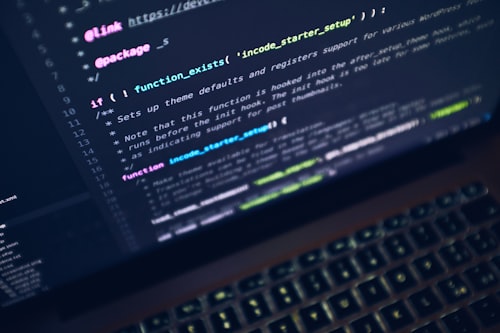Email validation is a crucial aspect of web development when it comes to ensuring the accuracy and integrity of user-submitted email addresses. JavaScript, being a versatile and powerful programming language, provides the necessary tools and techniques to create an email checker that can verify the validity of email addresses in real-time. In this comprehensive guide, we'll explore the world of email validation in JavaScript, covering various approaches, best practices, and addressing common questions to help you master this essential skill.
The Importance of Email Validation
Before we dive into the intricacies of JavaScript email validation, let's understand why it's important in the first place. Email validation serves several purposes:
1. Ensuring Data Accuracy
By validating email addresses, you can ensure that the data entered by users is accurate and conforms to the expected format. This helps maintain data integrity and improves the overall user experience.
2. Preventing Form Spamming
Validating email addresses helps prevent the submission of fake or malicious data through forms. It acts as a deterrent for automated bots and reduces the risk of spamming and misuse of your website's resources.
3. Enhancing Communication Channels
Valid email addresses are crucial for establishing effective communication channels with your users. By ensuring that the email addresses are valid, you can maintain open lines of communication and deliver important notifications, updates, and promotional content.
Approaches to Email Validation in JavaScript
There are several approaches you can take to validate email addresses using JavaScript. Let's explore a few commonly used techniques:
1. Regular Expressions (Regex)
Regular expressions provide a powerful and flexible way to validate email addresses. JavaScript's built-in RegExp object allows you to define patterns and match them against user input to determine if the email address is valid.
For example, you can use the following regular expression to validate an email address:
const emailRegex = /[1]+@[\w\.-]+\.[a-zA-Z]{2,}$/;You can then use the test() method of the RegExp object to check if an email address matches the pattern:
const isValidEmail = emailRegex.test(email);This approach provides a flexible solution, allowing you to customize the validation criteria based on your specific requirements.
2. HTML5 Email Input Type
HTML5 introduced a new input type called email that includes built-in validation for email addresses. You can use this input type in your HTML forms and rely on the browser's built-in validation to ensure the correctness of email addresses.
For example, you can define an email input field as follows:
<input type="email" name="email">The browser will automatically validate the input and display an error message if the email address is not valid. However, it's important to note that this approach relies on the user's browser supporting HTML5 and enforcing the validation rules correctly.
Best Practices for Email Validation
While implementing email validation in JavaScript, it's essential to follow best practices to ensure accuracy and reliability. Consider the following tips:
1
. Combine Multiple Validation Techniques
Instead of relying solely on regular expressions or HTML5 validation, consider combining multiple techniques to achieve comprehensive email validation. This can help catch a wider range of potential errors and provide a more robust solution.
2. Provide Clear and User-Friendly Error Messages
When an email fails validation, it's important to provide clear and concise error messages to the user. This helps them understand the issue and take appropriate action to rectify it. Avoid generic error messages and provide specific guidance on what went wrong.
3. Consider Server-Side Validation
Client-side validation using JavaScript is beneficial for immediate feedback and a smoother user experience. However, it's crucial to perform server-side validation as well. Client-side validation can be bypassed, so server-side validation acts as a failsafe to prevent incorrect or malicious data from entering your system.
Frequently Asked Questions
1. Can email validation be 100% accurate?
No, achieving 100% accuracy in email validation is challenging. Email addresses can be complex, and the validation criteria may vary. However, by implementing robust validation techniques and following best practices, you can ensure a high level of accuracy and minimize errors.
2. Should I perform email validation on the client-side or server-side?
It's recommended to perform email validation on both the client-side and server-side. Client-side validation provides immediate feedback to users, while server-side validation acts as a safeguard to catch any potential issues that might bypass client-side validation.
3. How often should I update my email validation logic?
It's important to stay updated with the latest email validation best practices and techniques. Email standards and formats may change over time, so periodic updates to your validation logic ensure that it remains effective and accurate.
4. Are there any JavaScript libraries available for email validation?
Yes, there are several JavaScript libraries available that provide pre-built email validation functionality. Some popular libraries include Mailcheck, mailboxlayer, and validator.js. These libraries can simplify the implementation process and provide additional features for advanced email validation.
Conclusion
Implementing email validation in JavaScript is a critical step in ensuring the accuracy and integrity of user-submitted data. By following the approaches and best practices outlined in this guide, you can create a robust email checker that enhances the user experience, prevents spam, and facilitates effective communication. Remember to continuously update your validation logic and stay informed about the evolving email standards to maintain a reliable and accurate email validation system.



